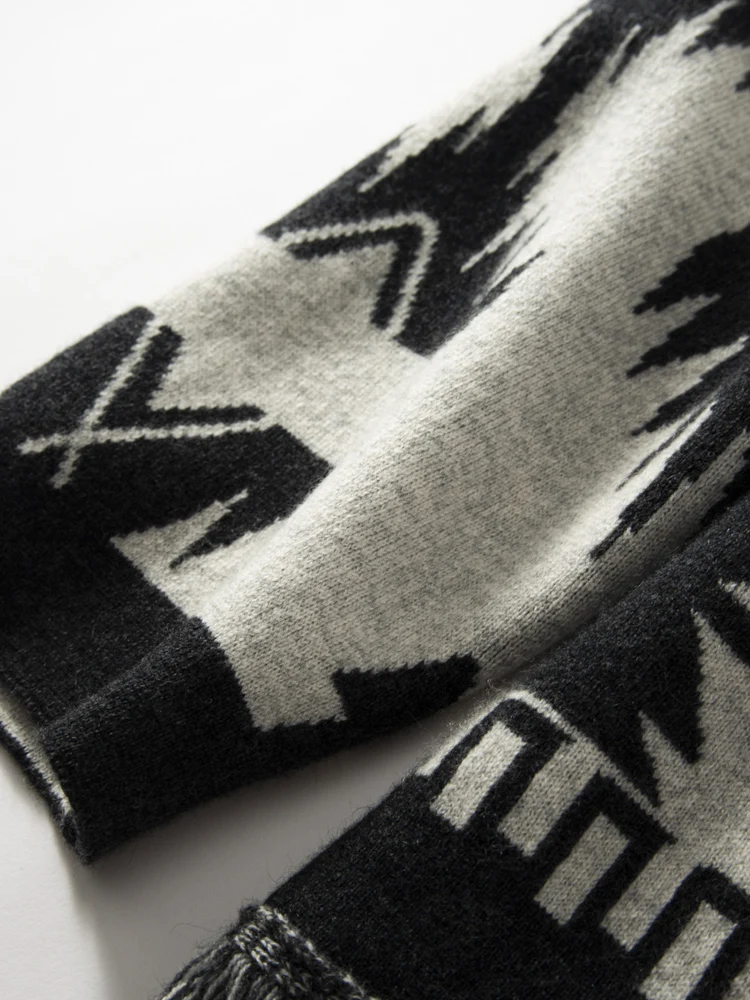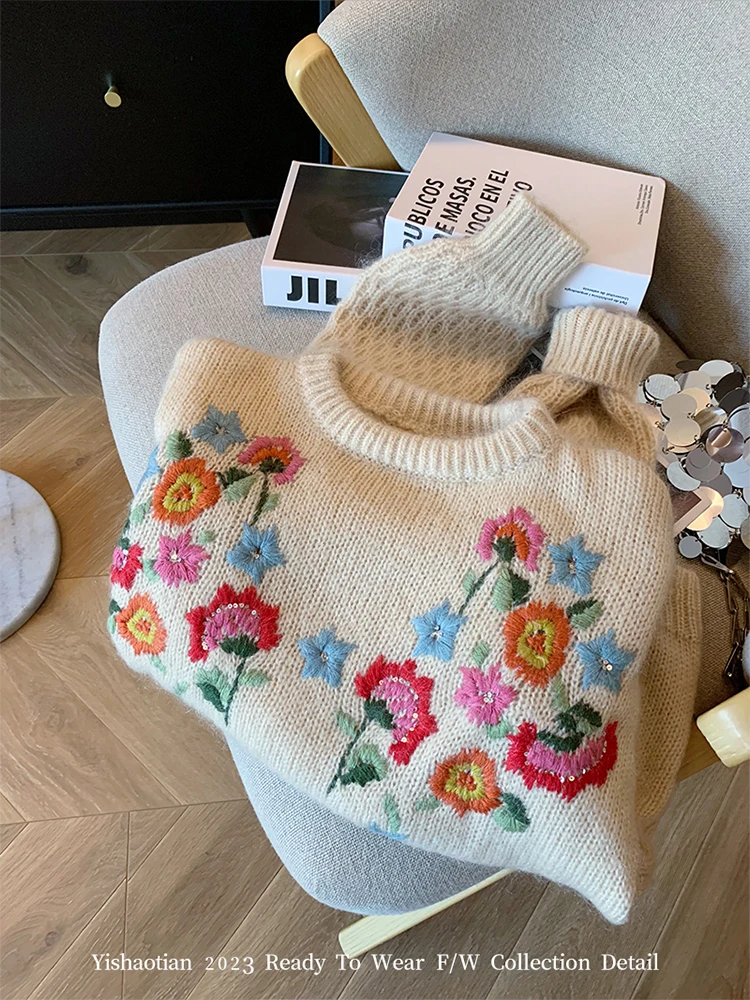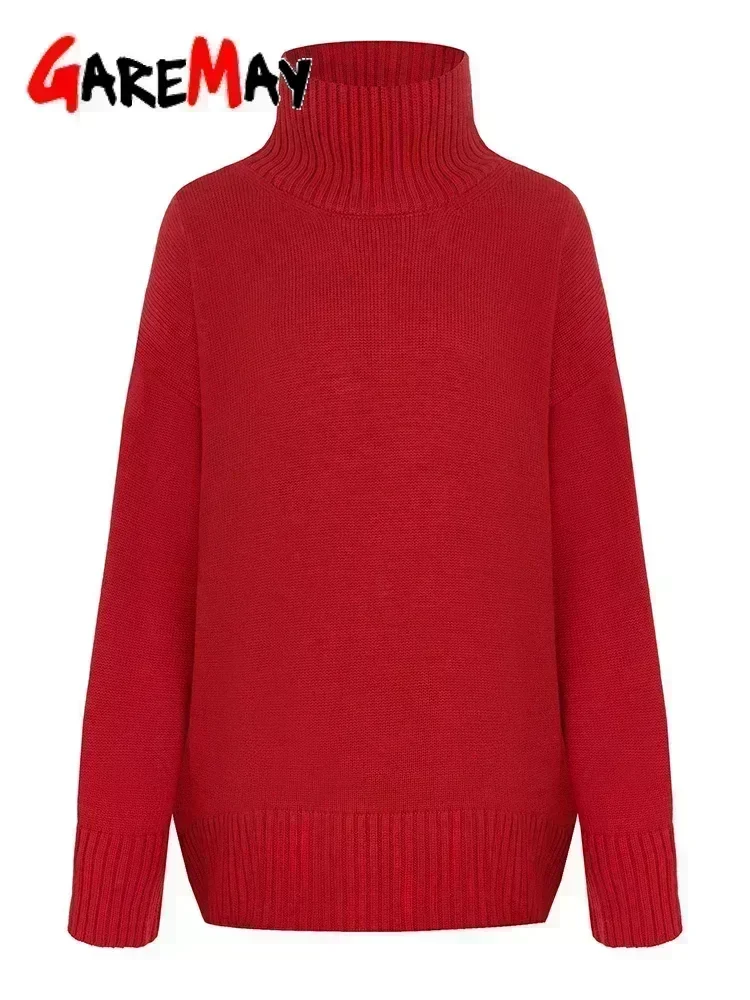Introduction: Understanding Cashmere Pilling and Why It Happens
Cashmere pilling—those small, fuzzy balls that appear on the surface of your beloved sweaters—is a natural occurrence that happens to even the finest quality garments. These small fiber balls form when shorter cashmere fibers work their way to the surface of the fabric and twist together, creating those little nuisances we call pills.
Even high-quality cashmere develops pills because of the inherent characteristics of the fiber itself. Cashmere is incredibly soft and fine, which unfortunately means it can be prone to pilling when subjected to friction. The most common areas for pilling tend to be:
- Under the arms where fabric rubs against itself
- Near purse straps where the bag contacts your clothing
- Along seat belts where consistent pressure occurs
- At the sides where arms naturally rest against the body
It’s important to understand that pilling doesn’t indicate poor quality. In fact, it’s often most noticeable during the first few wears as loose or shorter fibers work their way to the surface. Proper styling tips for cashmere cardigans can help minimize friction, but knowing how to safely remove pills is essential for maintaining your luxury garments.
The good news is that with the right tools and techniques, you can easily remove these pills and restore your cashmere to its original glory. Understanding pilling helps you select the appropriate removal method, and implementing expert guide on preventing cashmere pilling practices can reduce future occurrences.
The Essential Cashmere Pill Removal Toolkit
Before attempting to de-pill your precious cashmere items, it’s important to assemble the right tools. Using specialized implements designed specifically for delicate fabrics is crucial to avoid damaging your investment pieces.
When selecting pill removal tools for cashmere, consider these key factors:
- Gentleness: How soft the tool is on delicate fibers
- Efficiency: How effectively it removes pills
- Control: How precisely you can target pills without affecting surrounding fabric
- Suitability: Which tool works best for your specific garment weight and knit type
The most effective cashmere pill removal tools can be organized from gentlest to most aggressive:
- Cashmere combs and brushes (safest option)
- Electric fabric shavers with guards (good balance of safety and efficiency)
- Sweater stones (for stubborn pills on sturdier knits)
High-quality cashmere sweaters deserve proper care with appropriate tools that extend their lifespan while maintaining their luxurious feel.
Cashmere Combs: The Gentlest Option for Your Luxury Garments
Cashmere combs represent the gold standard in pill removal for luxury garments. These specialized tools feature fine-toothed metal combs with carefully rounded edges designed to lift and remove pills without catching or damaging the delicate underlying fibers.
What makes cashmere combs ideal is their precision and gentleness. Unlike electric options, these manual tools give you complete control over pressure and movement, making them perfect for high-grade cashmere with ultra-fine fibers under 16 microns.
To use a cashmere comb effectively:
- Lay your garment flat on a clean, smooth surface
- Hold the fabric taut with one hand
- Gently glide the comb in one direction (not back and forth)
- Use short, light strokes rather than long, aggressive ones
- Clean the comb frequently during use to prevent fiber buildup
Quality cashmere combs typically range from $15-30 and are a worthwhile investment for maintaining your premium garments. The best combs have ergonomic handles and teeth specifically designed for fine gauge knits.
For optimal garment care, combine regular combing with proper folding and storing techniques for cashmere to maintain your luxury pieces in pristine condition. While cashmere combs require slightly more time and patience than electric alternatives, they offer unparalleled safety for your most treasured items.
Electric Fabric Shavers: Balancing Efficiency and Safety
Electric fabric shavers offer a time-saving alternative to manual combs while still providing effective pill removal for your cashmere garments. These battery-operated devices use rotating blades beneath a protective mesh guard to cut away pills without damaging the underlying fabric.
When selecting an electric shaver specifically for cashmere, look for these essential features:
- Adjustable height settings to control cutting depth
- Small guard holes that prevent fabric from being pulled in
- Multiple speed options for different fabric weights
- Detachable heads for easy cleaning
- Battery life sufficient for completing multiple garments
For safe and effective use on cashmere:
- Select the highest guard setting initially (farthest from fabric)
- Hold the shaver approximately 1/8 inch (3mm) above the fabric
- Move in gentle, circular motions across small sections
- Clean the collection chamber frequently during use
- Test on an inconspicuous area first
- Never press the shaver directly against the fabric
Quality fabric shavers suitable for cashmere typically range from $12-50, with higher-end models offering more precise control and better safeguards for delicate fabrics.
While electric shavers work more quickly than combs, they require careful attention to avoid potential damage. They’re particularly useful for brushed cashmere sweaters where pills may be more abundant due to the textured surface.

Comparing Cashmere Pill Removal Tools: A Detailed Analysis
When deciding which tool to use on your cashmere, understanding the strengths and limitations of each option will help protect your garment while effectively removing pills.
| Tool Type | Gentleness | Efficiency | Learning Curve | Price Range | Best Applications |
|---|---|---|---|---|---|
| Cashmere Comb | ★★★★★ | ★★★☆☆ | ★★★☆☆ | $15-30 | Ultra-fine cashmere, delicate knits |
| Electric Shaver | ★★★☆☆ | ★★★★★ | ★★☆☆☆ | $12-50 | Medium-weight cashmere, larger areas |
| Sweater Stone | ★★☆☆☆ | ★★★★☆ | ★★★★☆ | $8-15 | Stubborn pills, cashmere blends |
The ideal tool often depends on your specific cashmere garment:
For lightweight, fine-gauge pure cashmere: Cashmere combs offer the safest approach, minimizing risk to delicate fibers while effectively removing pills. The learning curve is moderate but worth mastering.
For medium-weight cashmere: Electric shavers with appropriate guards provide an excellent balance between safety and efficiency, removing pills quickly while maintaining fabric integrity when used correctly.
For heavy knits or cashmere blends: Sweater stones can tackle stubborn pills effectively, but require practice and a gentle touch to avoid damage.
Combining different tools for preventing and removing pilling from cashmere might be the most effective approach for comprehensive care, using gentler methods for regular maintenance and stronger tools for occasional deep treatments.
Sweater Stones and Pumice Stones: When and How to Use
Sweater stones—made from natural pumice or manufactured materials—work by creating controlled friction that breaks away pills while leaving the base fabric intact. While effective, these tools require extra caution with fine cashmere.
Warning: Sweater stones are generally better suited for thicker knits or cashmere blends rather than ultra-fine pure cashmere.
These stones may be appropriate for:
* Cashmere-wool blend garments with stubborn pills
* Heavyweight cashmere with particularly resistant pilling
* Areas where other methods haven’t successfully removed pills
To use a sweater stone safely on appropriate cashmere items:
- Always test on an inconspicuous area first
- Lay the garment completely flat on a hard surface
- Hold the fabric taut without stretching
- Use extremely light pressure—just the weight of the stone itself
- Work in one direction only with short, gentle strokes
- Vacuum or brush away loosened pills after each section
Visual warning signs that a stone is too abrasive for your garment include:
* Excessive fiber shedding
* Change in fabric texture
* Visible thinning of the material
For most premium cashmere items, especially cashmere wool cardigans with blended fibers, consider sweater stones as a last resort rather than your primary pill removal method.
Tools to Avoid: Protecting Your Cashmere Investment
To preserve the integrity and longevity of your luxury cashmere, certain common household items should never be used for pill removal, despite what some internet tips might suggest:
Razors or razor blades: These lack proper guards and can easily slice through delicate cashmere fibers, creating irreparable holes or thin spots even with the steadiest hands.
Safe alternative: Use a dedicated fabric shaver with protective guards designed specifically for delicate materials.Scissors or nail clippers: The imprecise cutting action snips actual garment fibers along with pills, progressively weakening the fabric structure with each use.
Safe alternative: Opt for a cashmere comb that lifts pills without cutting base fibers.Regular hairbrushes: The stiff bristles can be too aggressive and may snag or damage cashmere fibers.
Safe alternative: Invest in a purpose-made cashmere brush with appropriate bristle density.Adhesive tape or lint rollers: These can pull out good fibers along with pills and leave adhesive residue on the fabric.
Safe alternative: Use a gentle sweater stone for stubborn pills.Household scouring pads: These abrasive materials are far too harsh and will damage the delicate surface of cashmere.
Safe alternative: Try a specifically designed sweater comb with fine teeth.
Using inappropriate tools might seem to work initially but causes cumulative damage that shortens the lifespan of your garment. After properly de-pilling your cashmere, explore versatile styling options for your cashmere cardigan to show off your refreshed garment.
Step-by-Step Guide to Safely De-Pill Your Cashmere
Follow this comprehensive workflow to effectively remove pills while protecting your precious cashmere garments:
Prepare your workspace
* Choose a clean, flat, well-lit surface
* Remove any items that could snag or stain your garment
* Ensure you have adequate time (15-30 minutes for a sweater)Prepare your garment
* Turn the garment inside out first to address interior pilling
* Lay completely flat, smoothing out wrinkles
* Address one small section (approximately 4×4 inches) at a timeStart with the gentlest approach
* Begin with the lightest touch possible
* Gradually increase pressure only if needed
* Work in the direction of the fabric grainUse proper technique for your chosen tool
* For combs: Short, one-directional strokes
* For electric shavers: Small circular motions with minimal pressure
* For stones: Light, straight strokes letting the weight of the stone do the workClean your tool frequently
* Remove collected pills after each section
* This prevents pills from being redeposited on the garmentFinish and assess
* Gently shake or brush the garment to remove loosened fibers
* Allow the fabric to rest before wearing or storing

Tip: For heavily pilled areas, take breaks between sections to avoid over-working the fabric. De-pilling should be performed after cleaning but before storing your garment.
After removing pills, proper care is essential. If your cashmere has other care needs, learning how to remove stains from cashmere will help maintain its pristine appearance alongside pill removal.
Cashmere Wrap Sweaters, Women's Cashmere Pullovers
$75.89 Select options This product has multiple variants. The options may be chosen on the product pageCashmere Cable Knit Sweaters, Women's Cashmere Pullovers
Price range: $111.82 through $112.93 Select options This product has multiple variants. The options may be chosen on the product pageCropped Cashmere Sweaters, Women's Cashmere Pullovers
$155.77 Select options This product has multiple variants. The options may be chosen on the product pageOversized Cashmere Sweaters, Plus Size Cashmere Sweaters, Women's V-Neck Cashmere Sweaters
$136.87 Select options This product has multiple variants. The options may be chosen on the product pageStriped Cashmere Sweaters, Women's Cashmere Pullovers
$139.68 Select options This product has multiple variants. The options may be chosen on the product pageCashmere Wool Cardigans, Women's Cashmere Cardigans
Price range: $92.23 through $92.45 Select options This product has multiple variants. The options may be chosen on the product page
Prevention Strategies: Reducing Future Cashmere Pilling
While pilling is natural for cashmere, you can significantly reduce its occurrence through proper care and handling practices:
Washing and Drying Best Practices:
* Hand wash using cool water and mild cashmere-specific detergent
* Avoid agitation or wringing—gently press water out instead
* Lay flat to dry away from direct heat or sunlight
* Never use fabric softeners which can weaken fibers
Strategic Storage Solutions:
* Store folded rather than hung to prevent stretching
* Use acid-free tissue between folds to reduce friction
* Keep in breathable cotton storage bags rather than plastic
* Add cedar blocks (not touching the fabric) to deter moths
Wearing Habits That Minimize Friction:
* Rotate your cashmere pieces, wearing each item no more than 1-2 times per week
* Avoid carrying shoulder bags that rub against the fabric
* Wear a scarf or other barrier between cashmere and rough coat collars
* Minimize contact with rough surfaces like unfinished wood or concrete
Pre-Treatment Options:
* Consider specialized cashmere sprays that reduce static and friction
* Allow your garment to “rest” at least 24 hours between wearings
Oversized cashmere sweaters may experience different pilling patterns due to how they drape on the body, so adjust your prevention strategies accordingly.
Frequently Asked Questions About Cashmere Pill Removal
Does pilling mean my cashmere is poor quality?
No. Pilling is a natural characteristic of fine fibers, including the highest quality cashmere. In fact, extremely fine, soft cashmere (under 16 microns) can be more prone to pilling initially because the fibers are so fine. Quality cashmere typically pills less over time as loose fibers are removed.
How often should I de-pill my cashmere garments?
Address pilling when you notice it forming, typically after every 3-5 wears initially and less frequently thereafter. Over-processing can thin the fabric, so only de-pill when necessary.
Can professional dry cleaners remove pills safely?
Yes, many professional cleaners offer de-pilling services specifically for luxury fabrics. This is a good option for valuable pieces or if you’re uncomfortable doing it yourself.
Will pilling eventually stop on cashmere?
Yes. Pilling typically decreases significantly after the first few wears and cleanings as shorter, loose fibers are shed. High-quality cashmere stabilizes faster than lower grades.
Should I remove pills before or after washing?
Ideally after washing and drying. Clean cashmere pills are easier to remove, and washing can sometimes loosen pills naturally.

For more comprehensive care, consider exploring techniques for layering cashmere cardigans to reduce direct friction with rough outer layers.
Where to Find Quality Cashmere Pill Removal Tools
Investing in proper pill removal tools protects your luxury cashmere investment. Here’s where to find quality tools and what to look for:
Reliable Sources:
* Specialty clothing care retailers
* Department stores with dedicated garment care sections
* Cashmere brand online shops
* Fabric care specialty websites
What to Look for in Product Descriptions:
* Terms like “cashmere-safe” or “for delicate fabrics”
* Adjustable settings for fabric weight
* Protective features like guards or rounded edges
* Ergonomic design for controlled handling
Warning Signs of Poor-Quality Tools:
* Vague descriptions about compatible fabrics
* Excessively low prices compared to similar products
* Poor or few customer reviews
* No mention of fabric protection features
When evaluating price points, remember that quality tools are an investment in protecting garments worth significantly more. A $20-30 quality cashmere comb can preserve hundreds or thousands of dollars worth of luxury garments.
Look for brands that specialize in fabric care rather than generic household tools marketed for multiple purposes. The most effective tools are those designed specifically with delicate natural fibers in mind.







